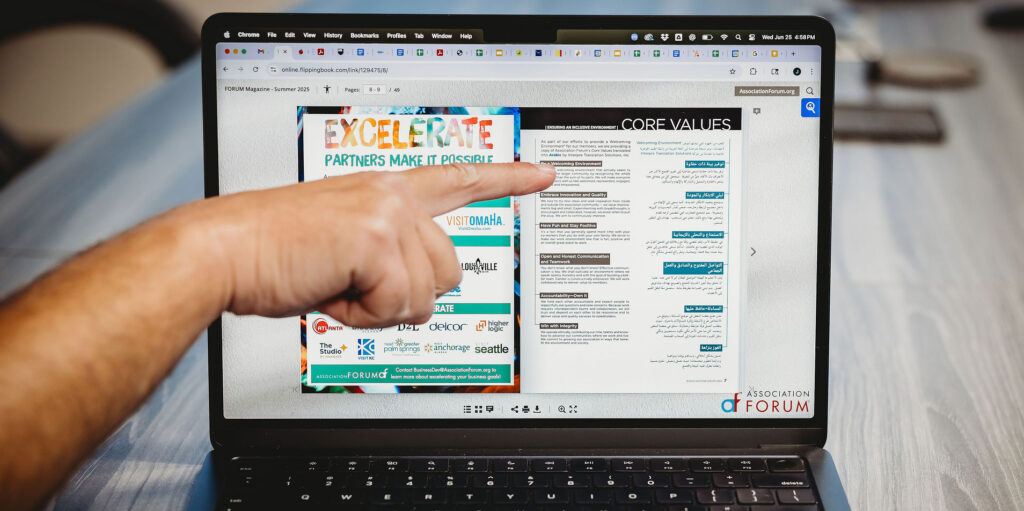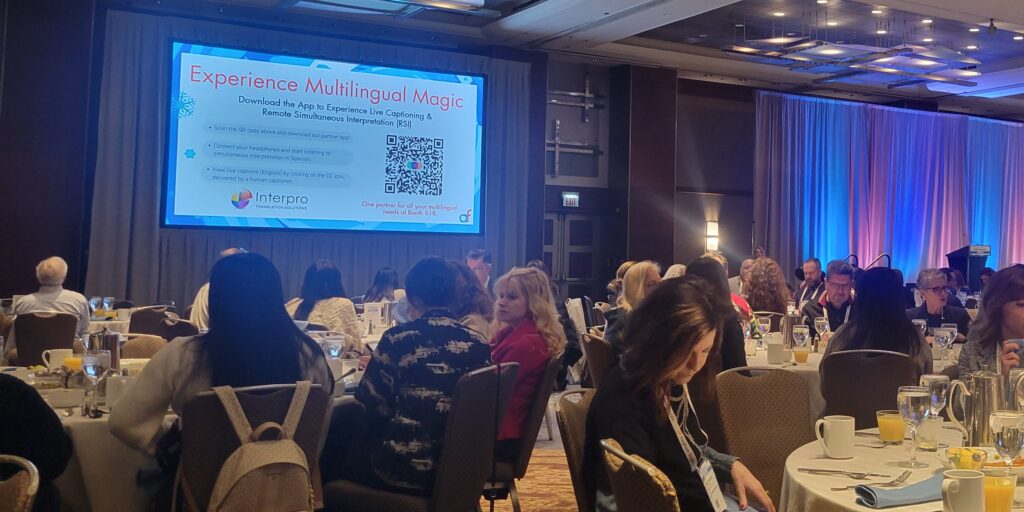
Learn essential tips and strategies for writing content that effectively reaches a multilingual audience through proper translation and localization.
This article is broken into two parts:
- How to Write for a Multilingual Audience: Translation vs Localization
- Practical Advice When Writing for Cross-Cultural Audiences
How to Write for a Multilingual Audience
Writing for a multilingual audience is the top reason companies and individuals seek out translation services. Savvy users know that (when done accurately) document translation can reach more people, sell more products or services, and provide access to a wider workforce. It’s true that English is spoken around the world, but it’s not enough to reach a global audience.
English is only 20% of global everyday conversation, and even within the United States it’s only 79% of daily communication. Nationwide, more than 300 languages are spoken in homes and communities. One language won’t reach everyone in your audience. Any single language can address no more than 30% of the global population.
Using a professional translation agency is the best way to communicate across languages and cultures. But even with a translation agency’s help, you have to set yourself up for success. If you’d like to reach a global audience (or your multilingual audience right here in the United States), your copy must be easy to translate into other languages.
There are many points that must be considered when writing content for a multilingual audience. First, important to understand that localization is the key during the translation process. Let’s consider the difference between translation services and localization services.
Translation vs. Localization
Translation is the practice of using the same words and the same content, only transcribed into another language. A translation agency would keep any references, anecdotes, and explanations the same—which could cause confusion or even offense to someone in another culture.
Localization adapts and modifies the source document into the local cultures or region you’re aiming to target. Translation is only one of the several elements of the localization process.
A prime example of translation vs. localization is a reference to “calling 911.” In the United States, we all are aware that 911 is the number for emergency services. But other countries have different emergency numbers, and the translated text stating “call 911” may not be accurate. A localization agency would adapt the content of your document to include the appropriate number for the country or region you are aiming to serve.
Once you understand the difference between translation and localization, you can begin applying practical tips to your writing.
Practical Advice When Writing for Cross-Cultural Audiences
1. Define Your Target Audience
With these cultural differences in mind, it’s crucial that you determine who you are writing for before you begin a project. While that’s a first step for any writing project, it becomes even more important when you plan to translate the final product. Especially if you plan to work with a translation agency, this will help them make your final product even more accurate.
Relating to your audience is much more difficult than simply translating the words literally. For effective cross-cultural communication, you must be able to efficiently convey your desired message and avoid misunderstandings. In short, you must write your source document in a way that will be understood by other cultures.
2. Include Document Translation in Your Planning Phase
As mentioned, your translation agency will put in the difficult work and help you reach a multilingual audience. However, there are considerations you need to make in the beginning stages before you even start writing a document that will need to be translated.
A source document is the original text that will need document translation services. This could be any type of document, including a PDF or InDesign file.
When planning a document translation, first consider the scope of the project:
- What is the content? Translation and localization services can help with any type of content, from web pages and user interfaces to publishing documents and even to video scripts.
- What is the format? How is the source document going to be structured? Are there any space or even character limitations?
- What is the tone? Is this a formal document or an informal, conversational piece?
- Where is the audience? As mentioned above, it’s critical to consider where your audience will be located and what language they speak.
Tip from a Professional Translation Agency:
If you translate content often, it’s helpful to provide reference materials like an approved glossary of translated terms or a translation style guide to provide to the translation service.
A glossary of terms is helpful, especially for highly technical content. If one is not developed yet, your organization should partner with a professional translation agency to develop one. The Glossary Development process allows the establishment of an English and corresponding target language translation of the most frequently occurring terms in your content, to then be reviewed and approved by a native speaker designated by your organization. This is done prior to beginning that actual translation of the entire content.
Once the glossary translation has been completed, you will have the option to review, edit, modify or approve the developed glossary using native speaking resources. This review will ensure that any preferential suggestions made by your team will be resolved upfront before the entire translation process begins. Once any feedback is implemented and the Glossary is finalized and ultimately approved by your organization, your translation partner will use the approved glossary during the localization process.

The next few tips will address what to consider during the writing stage.
3. Consider Names with Alternate Meanings in Other Languages
First, you should try to consider names or other terms that might have different meanings when translated into another language. A famous example is the Suja brand of juices. Unfortunately for the brand, “suja” is literally translated to “dirty” in Portuguese! This product would not be popular in Brazil or well received by anyone who speaks Portuguese.
4. Stay Away from Everyday Expressions
You should also stay away from references to everyday expressions that other cultures may not understand. For example, in the United States it’s common to ask for a “ballpark figure,” which is an idiom meaning a general estimate. Countries where baseball is not popular or even known would have no context for this reference and completely misunderstand.
To avoid confusion, inform your audience on context and relate explanations when reporting something specific. In the case above, if the reference to a ballpark figure is in a direct quote, try to include an explanation that can then be translated so that the audience can understand. Explaining the circumstances of a situation can go a long way to helping include a multicultural audience.
5. Avoid Acronyms
Another possible confusion is the use of acronyms. Because different languages use words in varying orders, acronyms are not universal. Americans might automatically know the reference to the CIA, but in France it could stand for Centre International d’Antibes—a language school that teaches French to foreign visitors. No matter what your acronym is or how famous you think it to be, you always need to provide context and explanations to make it clear.
6. Think of Sensitive Subjects
Finally, consider subjects that may be more sensitive in nature. For example, it is expressly taboo to discuss gender inclusivity and “alternative lifestyles” in Arabic. Most Arabic translation and localization services won’t even work on content that discusses LGBTQ+ topics.
Even if you’re not speaking directly about a topic, it could still impact your translation. Many languages have gendered nouns. Imagine if you were writing a source document on a topic for women but included no context. You could end up with masculine language for situations or products that only apply to women! Always include context for the target audience.
7. Consider Cultural Implications When Using Colors, Images, or Video Translation
Color matters! A professional translation agency will always consider the colors, images and videos in the target language.
What are the implications of the colors you plan to use with your text? In China, green is an unlucky color, so you wouldn’t want to design a user interface around that color. In the United States, orange is a typical color for prisoners’ attire. Therefore, you would want to stay away from any images or photos that show someone in an entirely orange outfit.
Despite the assumption that they are language-free, choosing icons can also be challenging. Even when reduced to their simplest form, pictorial representations may have different cultural meanings. Your translation agency should be able to assist with avoiding any cultural issues—this is another great case for localization.
Another translation agency best practice is to use infographics to convey data with your source document. Using an image to clearly show the relationships between data can go a long way to inform audiences across cultures. Be sure to leave room in your source document so that you can include additional explanations if necessary.
Keep all aspects of multimedia or video translation in mind. If have the video script translated into another language, don’t forget subtitle translation as well. Voiceover translation can also be used to provide a more inclusive, especially for ADA compliance. For example, if you have captions on a video and then you need to translate that video, you’ll want to ensure you’re translating the captions along with the audio.
8. Use Professional Translation Services that Offer Localization
Now that you’ve written your source document and provided plenty of context, you’re ready to have your friend translate it, right? After all, she took Chinese in college. And there’s always using Chat GPT to translate —why bother with a translation agency?
Each option above is a bad idea! Let’s unpack the many reasons why you a need professional translation agency.
First, your friend who took Chinese in college may be a great resource, but they won’t understand all the cultural dangers that can be found. They may be able to literally translate each word, but what about idioms and other localization issues? They didn’t grow up in China – they can’t translate into common terms used in their culture. Plus, cultures and languages evolve over time. By using a translator that is immersed in the country and culture where your content will be used, they will be providing you the most modern and accurate translation possible.
Second, AI translation tools are a great resource for translating a word on the fly. Tourists use it all the time to order a cup of coffee (they just might not get the right order). But machine translation can’t understand the context and nuances that humans can, and the results can be hilariously awful (just Google “Google Translate Fails”). A mistranslated text could result in legal issues, public relations headaches, human resources complaints or violations, and could affect your bottom line. Plus there are a fair bit of translation formatting struggles you’ll experience.
Ready to start translating?
If you’ve applied these tips to your English source file then, congrats! You’re ready for the next step – starting your translation project. To ensure your hard work pays off and your content is localized correctly, we always recommend choosing professional translation and localization services like Interpro.
No matter what language your audience is using, set yourself up for success. Follow our guide to preparing your source document for translation and localization services and choose a partner that will be with you every step of the way!
Category: Translation
Don't forget to share this post!
Stay Updated with Interpro
Subscribe to our newsletter for the latest updates and insights in translation and localization.







